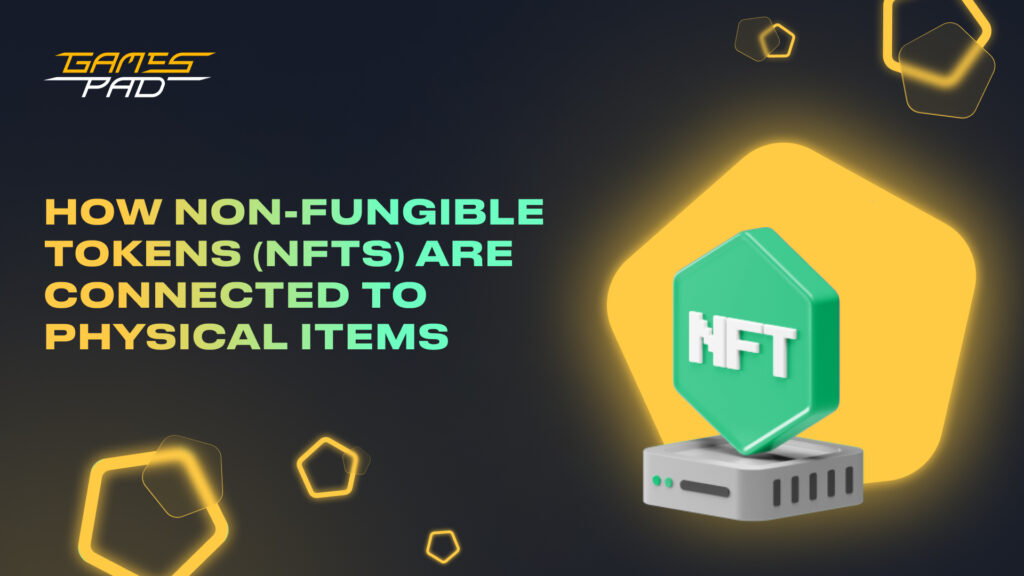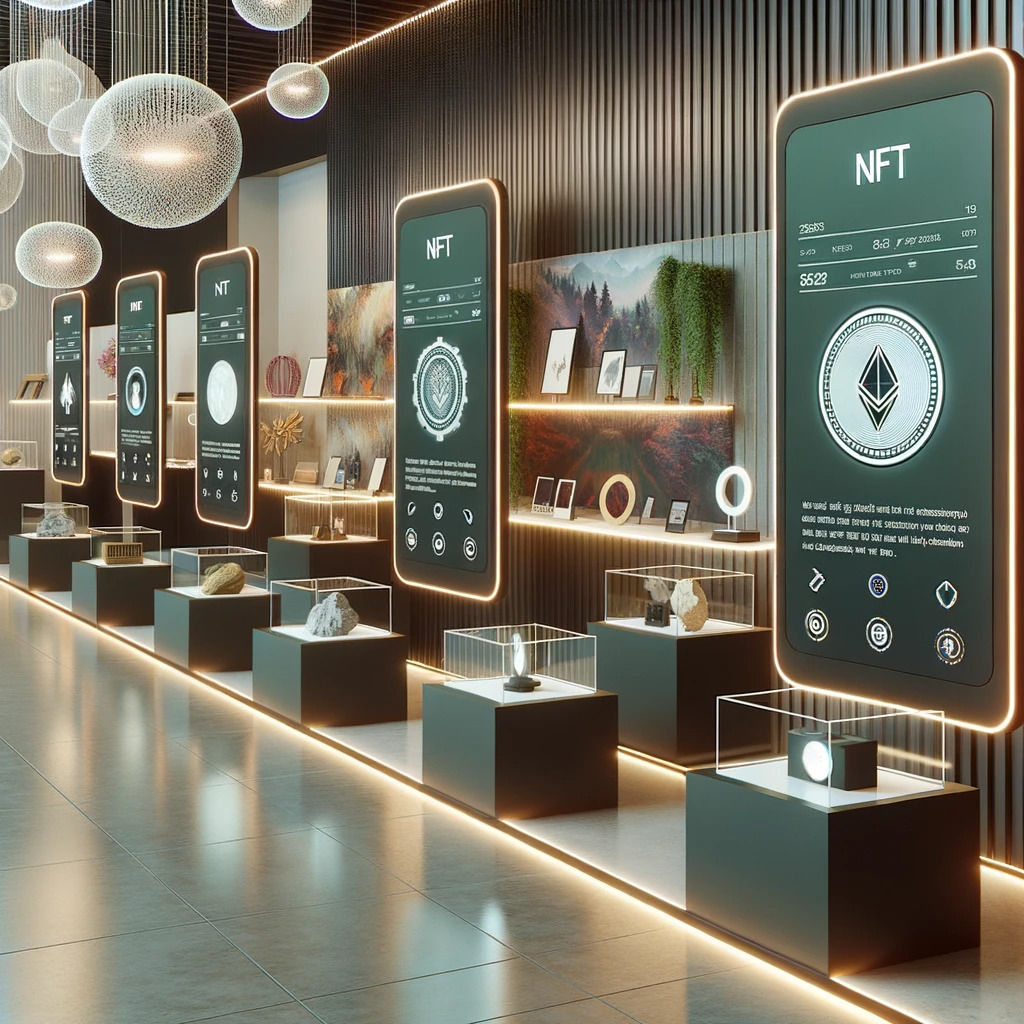
We all know non-fungible tokens (NFTs) as digital tokens that exist on the blockchain. In many cases, they are used for linking physical assets with digital ones and serve as a unique identifier and proof of ownership for a physical item.
For example, real estate can be tokenized, and you get a certificate that proves your ownership in the form of a non-fungible token. Or, if you are an artist, you can convert your physical artwork into a non-fungible token, and every time it is sold and resold, you will be getting your commissions. And it can be applied to just any object, even though we shall admit that using NFTs for art was one of the major cultural milestones achieved so far.
Blockchain technology can provide traceability for non-fungible tokens which means that it is relatively easy to prove the authenticity of any non-fungible token you want to buy or sell.
Non-fungible tokens are growing in popularity, and multi-million dollar sales are the main proof of it. It looks like the secondary market for cryptographic tokens is booming, and this trend is going to continue.
But it doesn’t matter how good a digital copy of a real-world object is; technology needs to connect virtual experiences with physical items to succeed. This is what human nature requires.
And this is one of the main reasons why physical NFTs evolved.

Despite the enchanting allure of the digital, it’s ingrained in human nature to seek a tangible connection to the physical world. A digital copy, no matter how exquisite, yearns for a physical counterpart to complete its essence. This innate desire has propelled the evolution of physical NFTs.
Physical NFTs are digital tokens issued on a blockchain, akin to their purely digital counterparts. However, unlike any other NFT, physical NFTs are linked to physical assets, intertwining the physical and digital realms. They serve as a golden thread, linking physical assets to the digital ledger, a leap towards integrating NFTs with their physical counterparts to appeal to digital natives and traditionalists alike.
A physical NFT typically consists of two intertwined components: a digital token on the blockchain and a corresponding physical item in the real world. This duality allows for the encapsulation of real-world assets within the digital domain, providing a new avenue to prove authenticity and provenance.
When you buy or sell physical NFTs, you’re engaging in a trade that extends beyond the screen, reaching into the tangible realm. This can range from exclusive physical merchandise to high-value physical assets associated with the art world. For instance, an NFT art piece may be redeemed for the physical version, or a collector’s item in an NFT collection could correspond to a physical one, enhancing the collectible’s intrinsic value.
Examples of physical NFTs stretch across various domains, from art pieces, NFT memberships, to exclusive physical merchandise like physical hoodies from a first NFT collection. These physical NFTs are also carving a niche within the NFT space, presenting a captivating blend of the digital and physical lives we lead.
The process to connect the physical item to an NFT using NFC (Near Field Communication) technology is a testimony to the innovative strides in this domain. This connection creates a world where many physical goods can have a digital twin, expanding the NFT space to encompass assets based on the real world.
The allure of physical NFTs comes from the potential to combine the digital and physical, creating a realm where ownership over real-world assets is intertwined with the digital ledger. In a world teeming with digital transactions, physical NFTs are gaining traction as a means to represent off-chain assets like artworks, collectibles, and other high-value physical assets, providing a robust platform for the seamless interaction between the digital and tangible.
Physical NFTs have the potential to redefine the world of NFTs, forging a robust link between the digital ephemeral and the physical tangible. As the realms of the digital and physical continue to meld, the horizon of what NFTs can encapsulate broadens, heralding a new era where the digital ledger not only records the ownership of unique digital assets but also becomes a key to unlocking real-world valuables.
While some NFTs are connected with or attached to their physical counterparts, such as artwork, toys, collectibles, jewelry, and other high-value physical assets, others are not (Apes, memes, etc.). For now, it looks like the first ones are growing in popularity, and the number of use cases of such tokens is constantly increasing. Here are the main potential and existing applications and use cases for NFTs.
While initially, NFTs were known in the form of popular NFT collections such as BAYC that could be traded, now, the NFC technology has expanded to many more use cases.
Non-fungible tokens are applied increasingly in real estate for representing such real world assets as houses and commercial buildings. In property deeds, NFTs also can represent a signed certificate which is a digital record on the blockchain that proves the ownership of a specific physical product.
Along with applications in foodverse, NFTs can be used to provide exclusive experiences in the real world. For example, FlyFish Club is a non-fungible token that gives access to real-life premises in New York where one can access a cocktail lounge, an outdoor space, and a restaurant. It also provides access to various social, cultural, and culinary events hosted in the same location.
In the supply chain, phygital NFTs have a very wide application. Their major advantage is that they cannot be replaced by another digital asset or a physical asset.
Such tokens are used to ensure the continuity of supply chains by reducing their instability and complexity and serve as a guarantee of the authenticity of tracked supplies.
One of the unique applications of NFTs in this field is to ensure that all the raw materials supplied from third-world countries are produced in an ethical way without exploiting the work of underaged ones. This way, blockchain technology, and NFTs also serve purposes other than monetization or entertainment.
Decentralized Finance uses digital assets for lending, borrowing, and staking purposes. When users provide liquidity for a DeFi pool, they get a corresponding unique identifier in the form of a financial NFT.
The users’ funds from a corresponding pool are lent to other users or staked. Liquidity providers get rewards; after some time, they can burn their NFTs and get the funds they have provided back.
Smart contracts manage the pools and all the payments. So, the entire system is decentralized, and the NFT technology becomes a valuable tool enabling financial operations and allowing users to earn in real life.
These tokens have been invented recently, and over time, we may expect the development of other non-fungible token varieties in DeFi. So, it is impossible to provide a complete overview of digital and physical NFT that can exist in DeFi.
Creating physical NFTs is not limited to representing physical artworks such as a physical painting, a physical piece of music, or another physical asset.
In Web3, NFTs are expected to play a completely different role. They will be used for identification. All data about users will be kept in the network, and NFTs will serve as certification assurances that the identity of one or another user is not faked.
This technology will be used not only for personality identification but to ensure the authenticity of consumer goods manufactured by popular brands, such as exclusive physical merchandise, physical artwork, valuable items, sports trading cards, and other assets.
Fashion is already using NFT technology widely. Initially, its application was limited to using digital spaces such as metaverses to create online stores, a physical version of real-world boutiques, and selling digital fashion items.
Now, their use cases have grown to the application in the physical world. Fastex, for example, is working on turning digital NFTs into physical NFTs.
For example, in an avatar booth, users can quickly create their avatars to use them further in the FastexVerse. Fastex believes that there shall be an interaction between digital art or the digital world and physical NFTs.
Visitors can not only create avatars but create physical NFTs by printing their favorite digital art and other pieces on physical hoodies, mugs, and posters. So, what about getting a physical copy of the first NFT collection in the form of a set of cards or other off-chain assets?
Along with creating physical works, visitors can enjoy the NFT space from the Fastex metaverse incorporated in physical work items such as eye-shaped sculptures from the AKNEYE series.
The AKNEYE project is a great example of how to connect the world of NFTs with the physical world and enable artists to benefit from online NFT marketplaces and from selling their physical art in the form of physical NFTs.
Even though the world of NFT, along with physical NFTs, is here to stay, and it was already proven during the recent bearish cycle. Still, the physical NFT sector has many challenges to overcome.
Those challenges can be divided into two main groups:
External – such as regulation, user adoption, and similar (these challenges and limitations are derived from the external world).
Internal – such as scalability, transaction speed, safety, and so on (limitations and challenges connected to the technology imperfections).
When it comes to regulation, physical asset,s and physical work are regulated by an established set of rules and laws.
But what if physical NFT, a physical asset, is not a pure physical asset but something that comes from the digital space? How shall such physical NFTs like those that Fastex creates be regulated? This question is still open.
Why? Because NFT technology, in general, and physical NFTs space specifically, is still very new, and the legislation system is very slow.
Shall we entrust the regulation of physical NFTs to smart contracts? But they operate in the digital space, not in the real one. And in the end, who will check whether smart contracts are built correctly and provide the required rules to make the physical NFT space safe and fair to users? These questions are still open.
Another problem is the one that blockchain technology has been facing since its wider adoption – the scalability issue. Even the fastest blockchain can process a limited number of transactions per second. While in the case of a physical item, a piece of physical art, or other physical tokens, this issue doesn’t exist, everything changes when we start using digital ones.
Finally, the technology on its own is not for beginners. So, to purchase a physical NFT, one has to at least find the place where it can be done. And to use an NFT marketplace, one needs to have a digital wallet with money in it and know how to use it for buying NFTs, what a public key is, and how to use a QR code for performing transactions.
Moreover, a user shall understand that not every NFT marketplace is safe, and the most popular ones, such as OpenSea, still lack the basic functionalities.
All these concerns shall be addressed if we want to enable NFTs to turn our world into a better place.
Over time, we believe, the border between the digital world and the physical one will be eliminated. In-person experiences will definitely speed up the adoption of this technology and make it accessible to everybody. And the potential of non-fungible tokens is immense.
Would you like to start investing in the most impactful crypto gaming, NFT and metaverse projects with GamesPad? Learn how in this comprehensive tutorial!
Disclaimer. This material should not be construed as a basis for making investment decisions or as a recommendation to participate in investment transactions. Trading digital assets may involve significant risks and can result in the loss of invested capital. Therefore, you must ensure that you fully understand the risk involved, consider your level of experience, investment objectives, and seek independent financial advice if necessary.